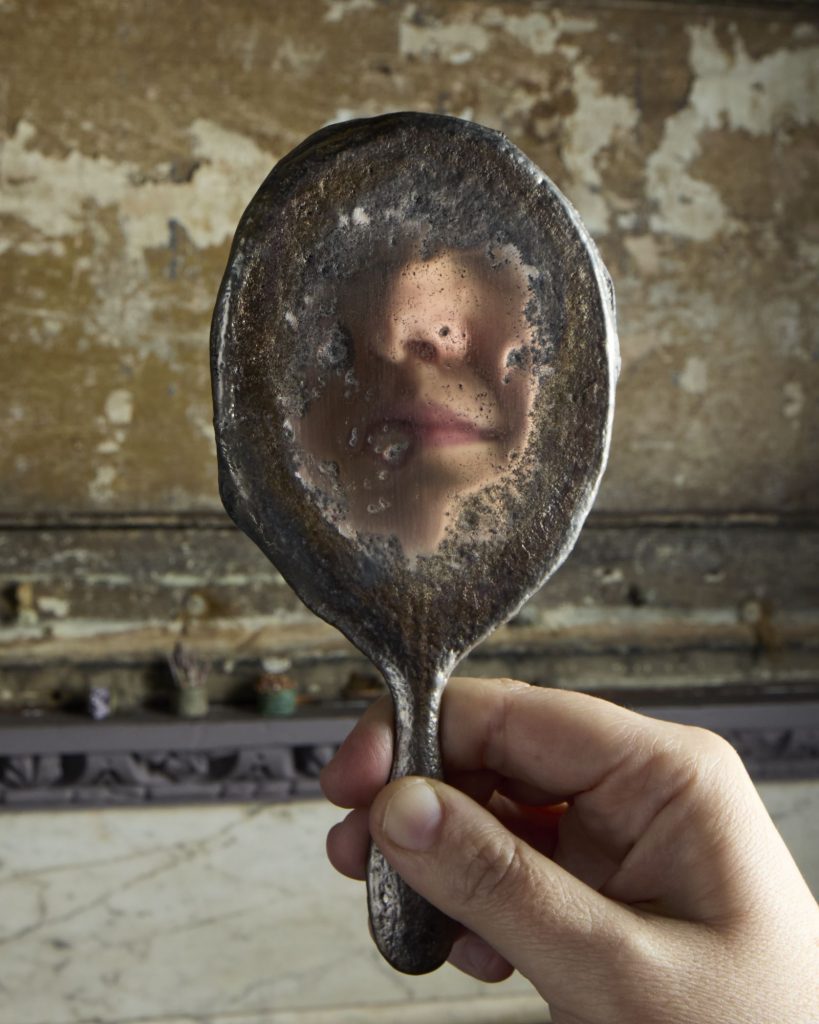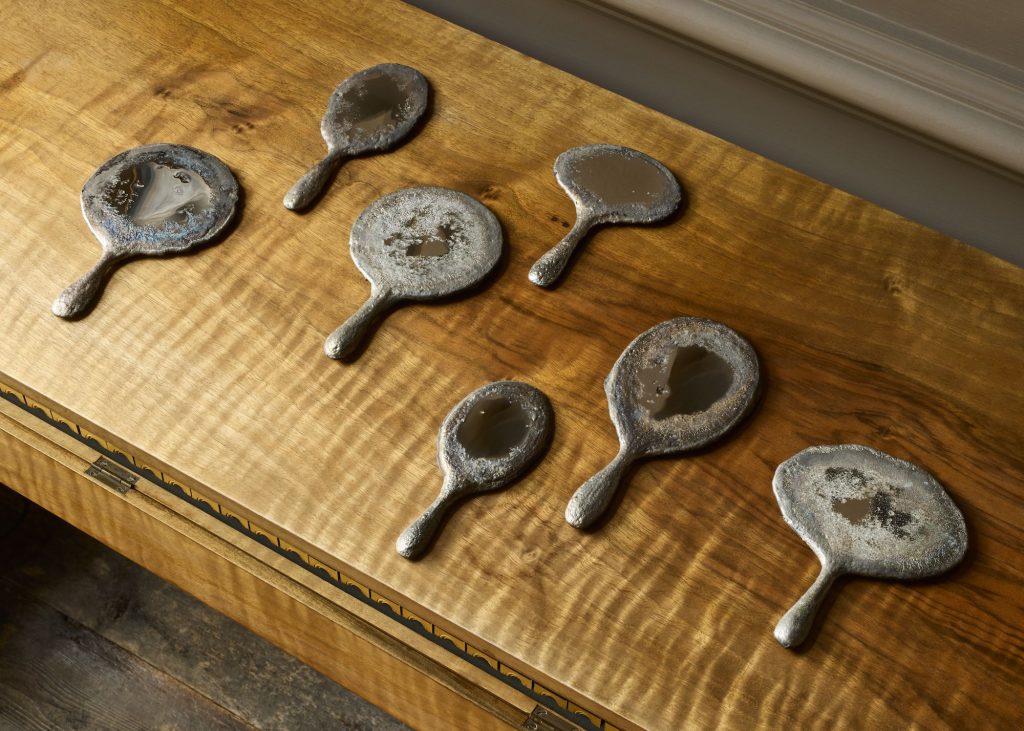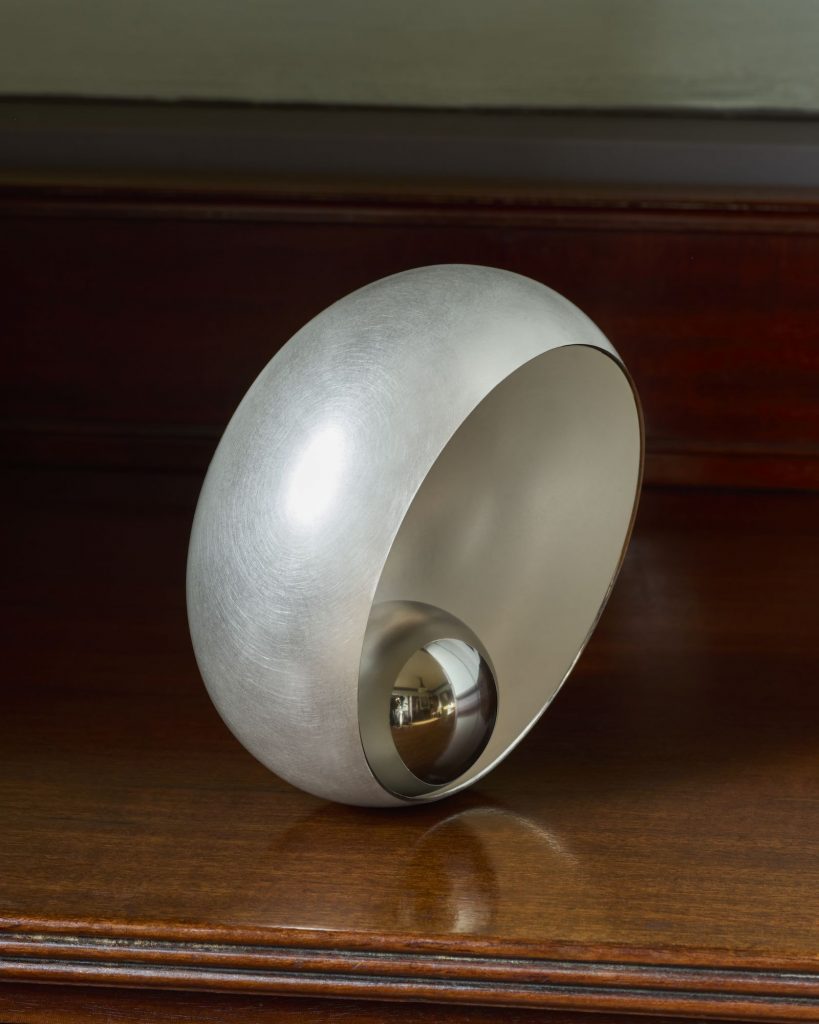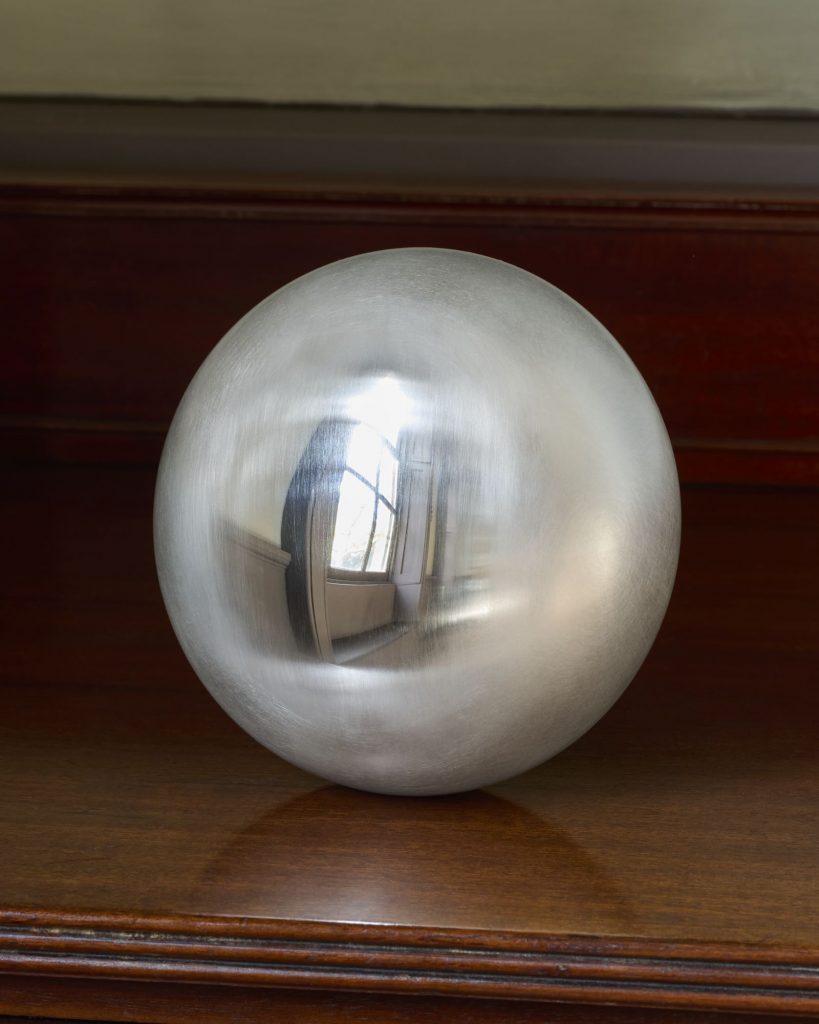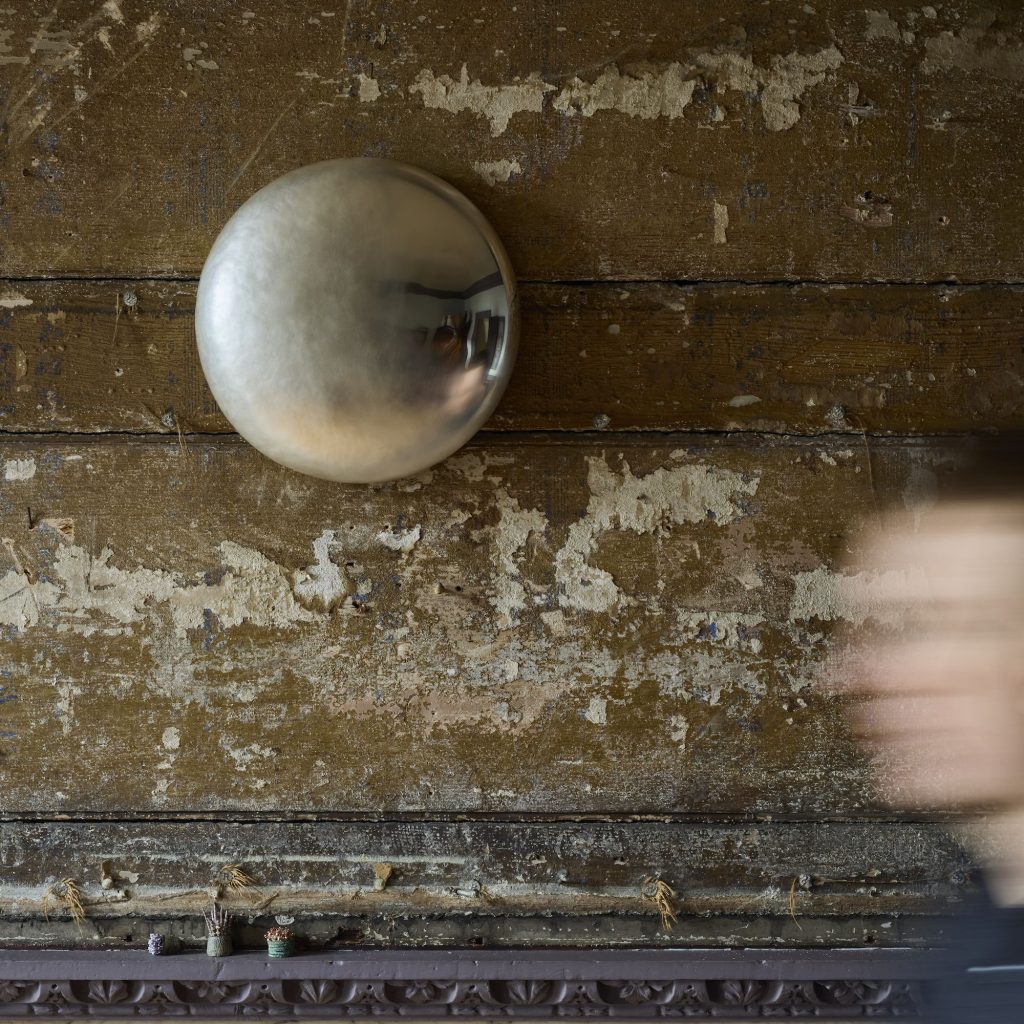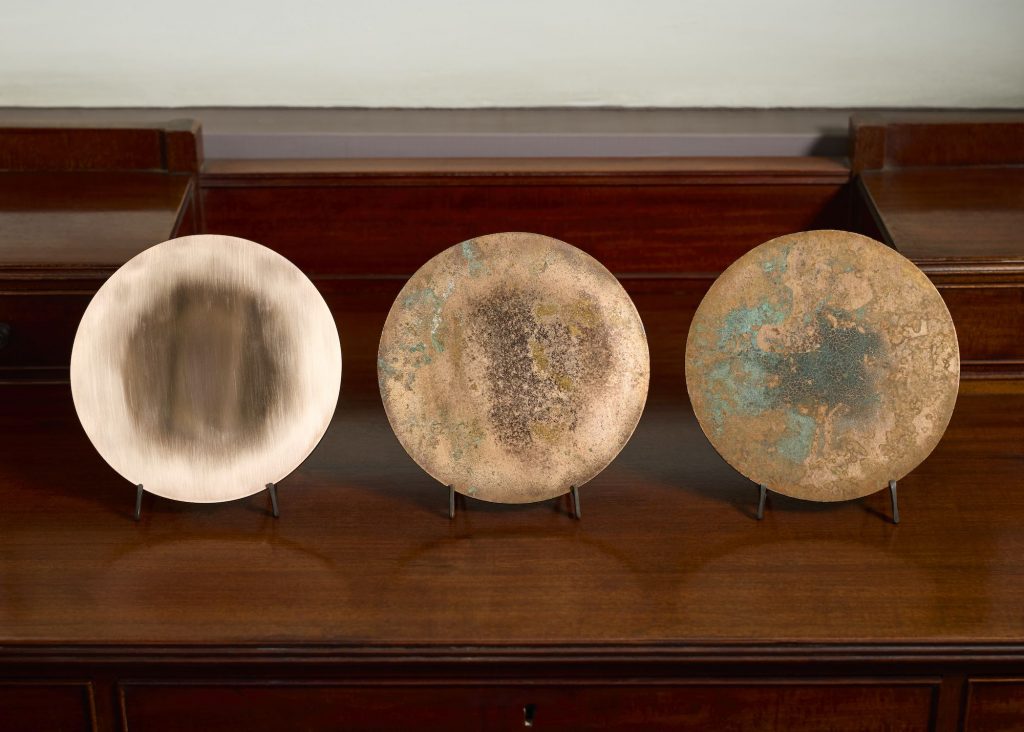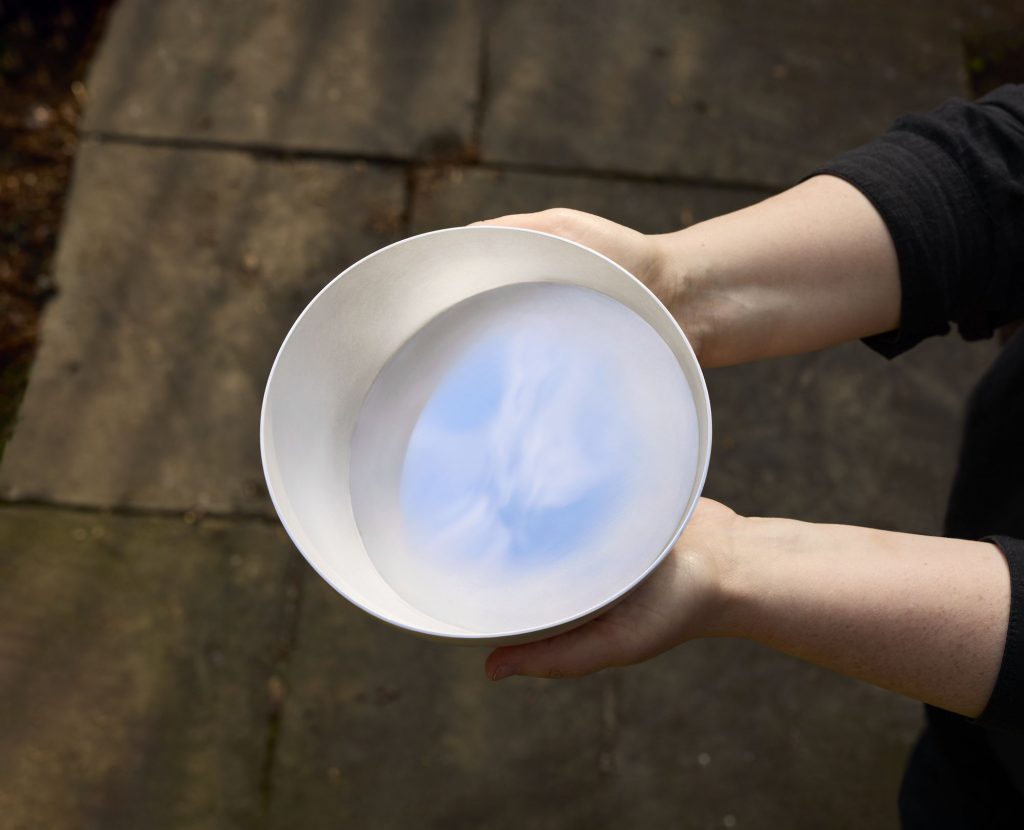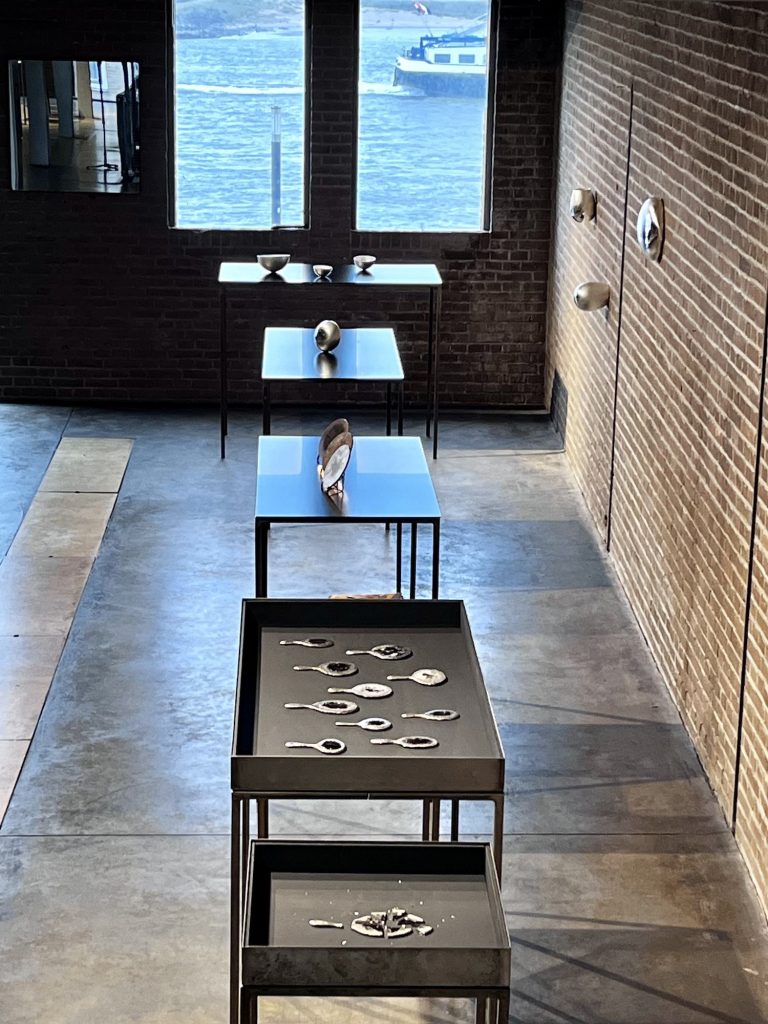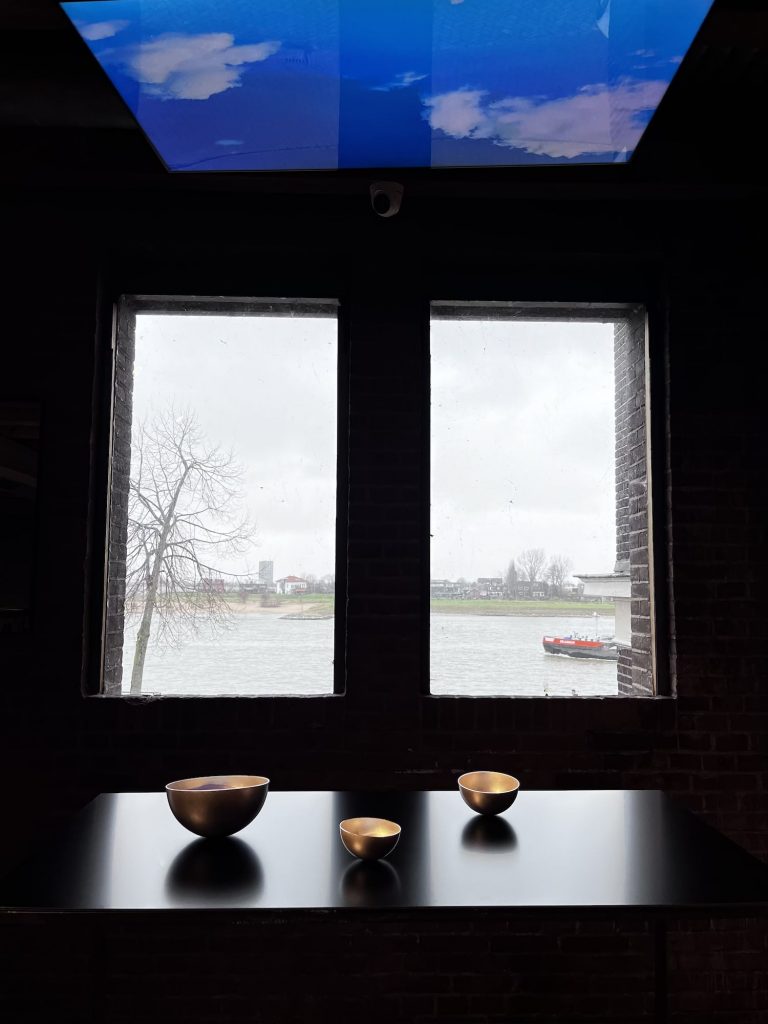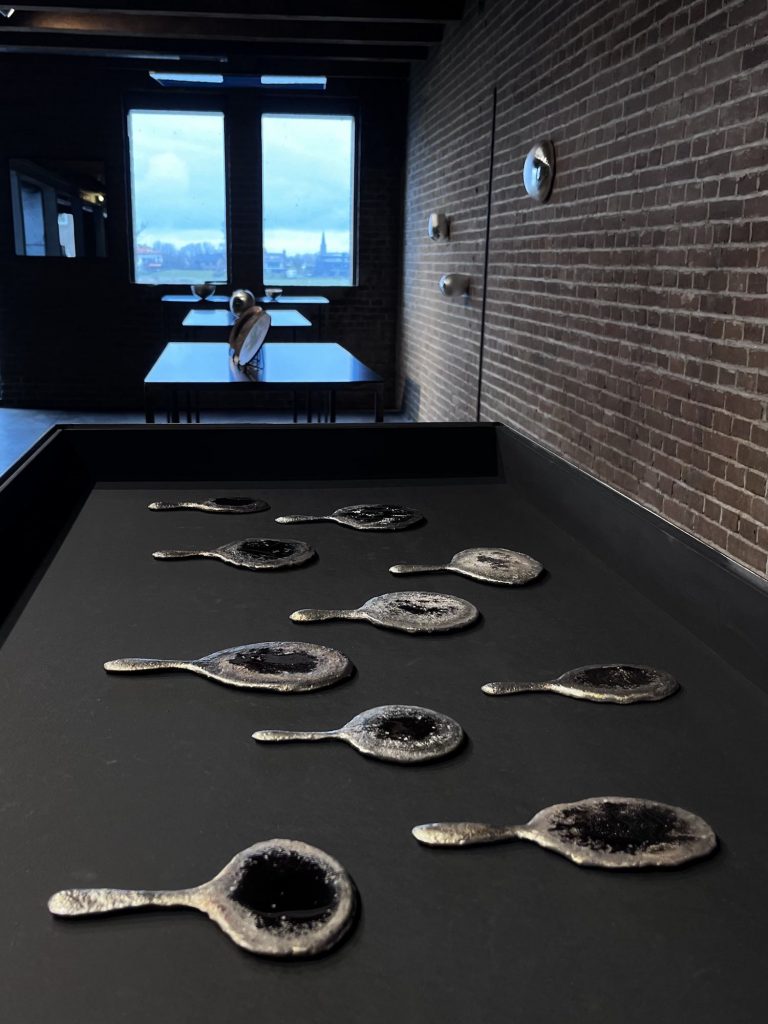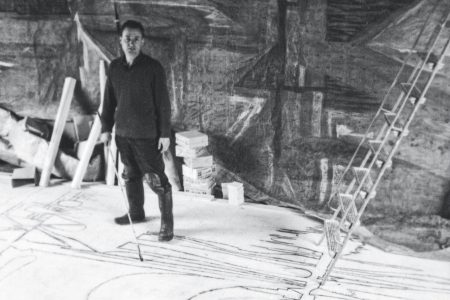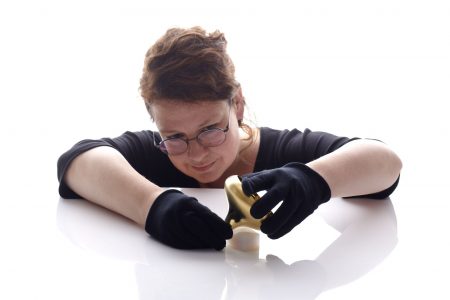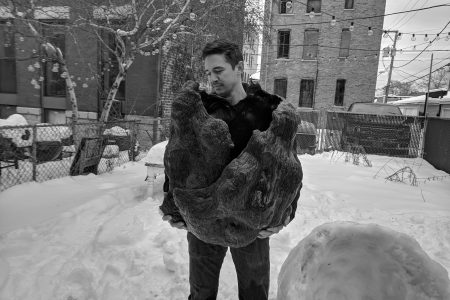
Adi Toch: The Art of Reflection
Adi Toch explores the world of mirrors in a compelling new series of work which is on view in an exhibition titled, Between Presence and Absence, at Galerie Marzee in The Netherlands, until April 22.
Adi Toch’s mirrors are in every sense instruments of reflection. She tells me that they were born out of lockdown in the recent pandemic; that intense period in which all of us were thrown back on ourselves and our inner resources. We were forced to restrict and reshape our relationships to others and to the world around us, so that a weed in the pavement encountered on our daily walk; a framed area of sky or a patch of grass in the local park took on a new significance. Adi’s Pooled Reflections, grew from the restriction of physical experience. The piece takes the form of a silver bowl with a silver liner set into it at an angle. It appears to be a bowl half filled with water and tilted, inviting the viewer to contemplate their surroundings. Placed on a windowsill, the piece reflects the sky beyond the glass: comforting reflections “bring the outside in”, as she puts it. Like James Turrell’s Sky Spaces, they offer endlessly changing views which quieten and still the mind. Her Balancing Mirror is actually two convex mirrors in different metals, one placed within the curve of the other, encouraging the viewer to move around the object and play with the reflections within reflections that it offers. Another element is the way in which the convex silver surface is part polished and part matte; clouding as you move from sharp to shadowy image.
Selfies and social media persuade us that images of ourselves are almost public property. We see mirrors as democratic objects in that they reflect whosoever looks into them. Adi talks about her mirrors as “an echo of changing reality” which “invite the viewer to become part of the work”. There is no doubt that her convex mirrors are responses to contemporary concerns, but in a way that also takes us back to the European Renaissance. Convex mirrors of polished metal have a long history in Europe as the art of “silvering” glass to make a mirror was only mastered at the end of the 15th century. Steel mirrors were made at the limits of contemporary technology. The precision of the reflection they offered was the result of the quality of the alloy used and the skill of the polisher. Adi describes her work in polishing her mirrors: “through the process of hand polishing, clarity is slowly distilled from the metal”. In Renaissance Italy, the craftsmen who made mirrors, the specchieri, had a status all their own, even being given nicknames like a certain “Bearded Giovanni the German” [Giovanni della Barba Tedesco]. Mirrors were cherished luxuries to be owned by a select few. This is something I have written about in a book on Italian Renaissance scholars and the way in which they set up their studies as spaces in which to think, read and write. In my book, The Scholar in his Study [New Haven and London 1997] I analyse how mirrors were at the heart of these rooms, concentrating into one circular compressed image all a scholar-collector’s treasured books and works of art kept in this most private of spaces. They were given special frames, sliding covers or curtains to protect them as if they were magic eyes. They also illuminated a small area, lit only by a window or candle, or served as magnifying lenses for deciphering text. The greatest and wealthiest collectors such as Isabella d’Este also sought the largest possible “specchi da camera” to reflect back at them all the fine objects in their apartments. These associations with culture, discernment and status ensured that mirrors were sought after by the courtesans – elite sex-workers who were celebrities in the modern sense– who fascinated tourists in Italian cities. Moralists unsurprisingly saw mirrors as instruments of vanity; something which the mirror-makers themselves liked to challenge in their carnival songs: “We give general notice that we make mirrors, not faces.” For artists, it was the truthfulness of mirrors which offered new ways of seeing. They could also use the device of a mirror reflection to bring their presence into the portraits of others, as Van Eyck famously does in the Arnolfini Portrait. Mirrors were useful aids in making self-portraits, such as Parmigianino’s image of his young self in a convex mirror which was part of Adi’s inspiration for Balancing Mirror. Looking into her piece, the observer can play with their own reflection in the convex form, spinning the silver mirror slowly on its axis to reveal the second, smaller steel mirror tucked within which balances the whole. As she explains, “In this particular object there is a duality of two mirrors, one inside another, interpreted through two different materials.”
For one Renaissance moralist, Sabba da Castiglione, mirrors could be safely promoted as spurs to virtue in that they heightened self-awareness and a sense of individual identity. As a collector and connoisseur, however, he felt the allure of a mirror. He tells us that, if he could afford it, the first thing he would buy for his study would be a large convex steel mirror by a leading specialist who also made scientific instruments such as astrolabes and globes. I am sure he would have applauded Adi’s experiments in the art of reflection in the 21st century.
-Dr. Dora Thornton is the Goldsmiths’ Company Curator, Goldsmiths’ Hall, London.
Between Presence and Absence
Text by Adi Toch
Reflective objects mirror the world around us, showing an image that can look at once familiar and at the same time strange. They invite the viewer to become part of the object, to watch their identity morph and distort as they move around it.
Reflection has an ethereal and intangible nature. It escapes touch or any other senses, except vision. It captures only a fleeting moment. A mirror portrays both fullness and emptiness at the same time.
Throughout history, mirrors were associated with myth and superstition, which is a connecting thread that binds us to our ancestors. They are haunting objects in their honesty and often show us something that we would otherwise not be able to see.
As an echo of changing time and reality, a mirror reflects a space in between, potentially holding not just what is there, but what might be or has been.
Adi Toch: Between Presence and Absence is on view at Galerie Marzee until April 22.
www.marzee.nl
@galeriemarzee
www.aditoch.com
@aditoch_metalwork
